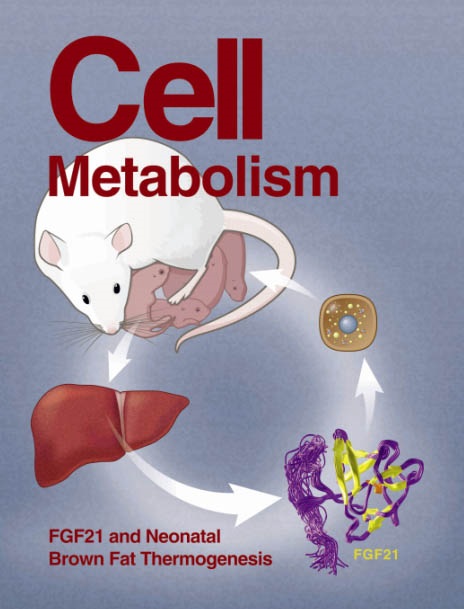Protein O-GlcNAcylation and hexokinase mitochondrial dissociation drive heart failure with preserved ejection fraction
IF 30.9
1区 生物学
Q1 CELL BIOLOGY
引用次数: 0
Abstract
Heart failure with preserved ejection fraction (HFpEF) is a common cause of morbidity and mortality worldwide, but its pathophysiology remains unclear. Here, we report a mouse model of HFpEF and show that hexokinase (HK)-1 mitochondrial binding in endothelial cells (ECs) is critical for protein O-GlcNAcylation and the development of HFpEF. We demonstrate increased mitochondrial dislocation of HK1 within ECs in HFpEF mice. Mice with deletion of the mitochondrial-binding domain of HK1 spontaneously develop HFpEF and display impaired angiogenesis. Spatial proximity of dislocated HK1 and O-linked N-acetylglucosamine transferase (OGT) causes increased OGT activity, shifting the balance of the hexosamine biosynthetic pathway intermediates into the O-GlcNAcylation machinery. EC-specific overexpression of O-GlcNAcase and an OGT inhibitor reverse angiogenic defects and the HFpEF phenotype, highlighting the importance of protein O-GlcNAcylation in the development of HFpEF. Our study demonstrates a new mechanism for HFpEF through HK1 cellular localization and resultant protein O-GlcNAcylation, and provides a potential therapy for HFpEF.

蛋白o - glcn酰化和己糖激酶线粒体解离驱动心力衰竭并保留射血分数
心力衰竭伴保留射血分数(HFpEF)是世界范围内发病率和死亡率的常见原因,但其病理生理机制尚不清楚。在这里,我们报告了HFpEF的小鼠模型,并表明内皮细胞(ECs)中己糖激酶(HK)-1线粒体结合对蛋白o - glcn酰化和HFpEF的发展至关重要。我们发现HFpEF小鼠ECs中HK1线粒体脱位增加。缺失HK1线粒体结合域的小鼠会自发发生HFpEF,并表现出血管生成受损。脱位的HK1和o连接的n -乙酰氨基葡萄糖转移酶(OGT)的空间接近导致OGT活性增加,将己糖胺生物合成途径中间体的平衡转移到o - glcn酰化机制中。ec特异性的O-GlcNAcase和OGT抑制剂的过表达逆转血管生成缺陷和HFpEF表型,突出了蛋白o - glcn酰化在HFpEF发展中的重要性。我们的研究通过HK1细胞定位和由此产生的蛋白o - glcn酰化揭示了HFpEF的新机制,并为HFpEF的治疗提供了潜在的治疗方法。
本文章由计算机程序翻译,如有差异,请以英文原文为准。
求助全文
约1分钟内获得全文
求助全文
来源期刊

Cell metabolism
生物-内分泌学与代谢
CiteScore
48.60
自引率
1.40%
发文量
173
审稿时长
2.5 months
期刊介绍:
Cell Metabolism is a top research journal established in 2005 that focuses on publishing original and impactful papers in the field of metabolic research.It covers a wide range of topics including diabetes, obesity, cardiovascular biology, aging and stress responses, circadian biology, and many others.
Cell Metabolism aims to contribute to the advancement of metabolic research by providing a platform for the publication and dissemination of high-quality research and thought-provoking articles.
 求助内容:
求助内容: 应助结果提醒方式:
应助结果提醒方式:


